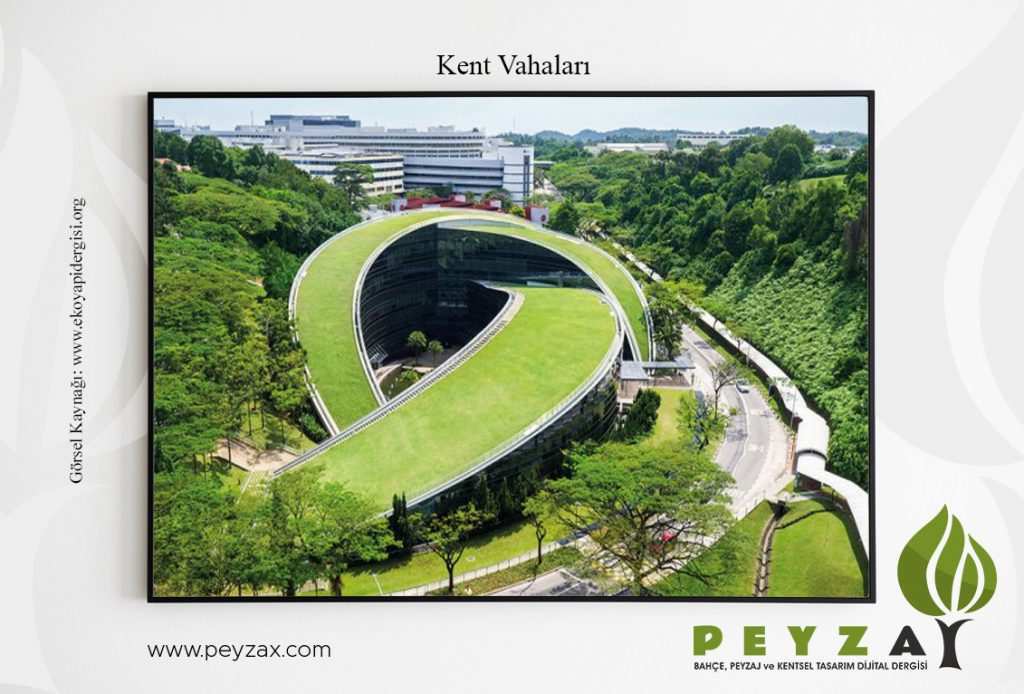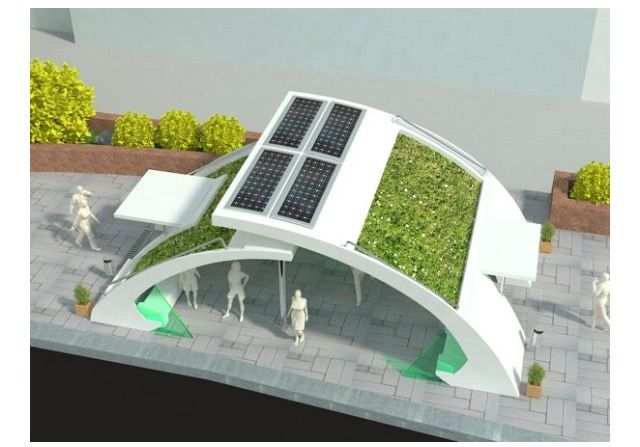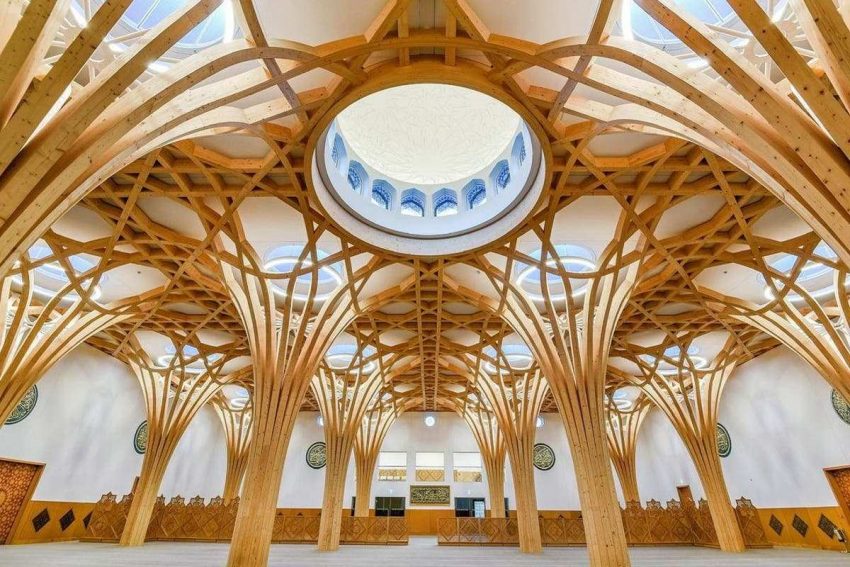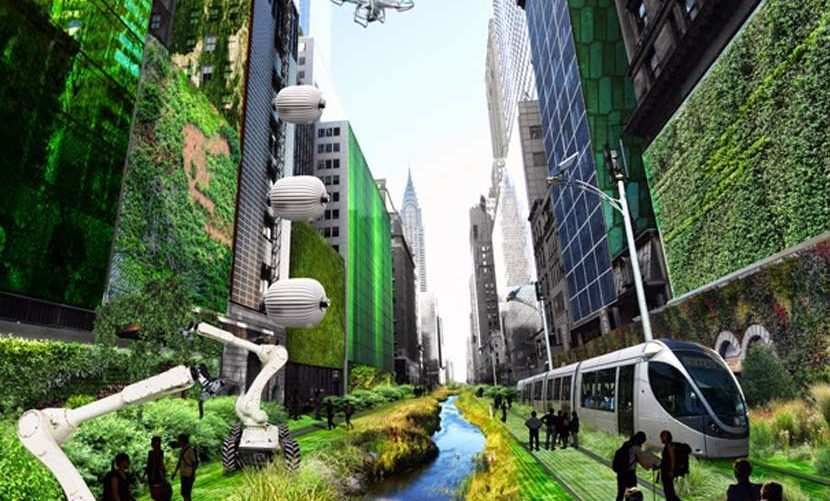Titles
Green infrastructure is an important part of urban planning. It is a network of natural and semi-natural areas that provide a range of environmental, economic, and social benefits. Green infrastructure can include parks, greenways, wetlands, and other natural areas. It can also include green roofs, rain gardens, and other green technologies. It helps to reduce stormwater runoff, improve air quality, provide habitat for wildlife, and create recreational opportunities. It also helps to reduce the urban heat island effect, improve water quality, and provide green space for people to enjoy. It is an important part of creating sustainable cities and towns. It helps to reduce the impacts of climate change, improve public health, and create vibrant and livable communities.
The Role of Green Infrastructure in Enhancing Urban Biodiversity
Green infrastructure is an important tool for enhancing urban biodiversity. It is defined as a network of natural and semi-natural areas that provide a range of ecosystem services, including the conservation of biodiversity. It can be used to create and maintain habitats for species, to reduce the impacts of urban development, and to improve the quality of life for urban residents.
The use of green infrastructure in urban areas has been shown to have a positive effect on biodiversity. Studies have demonstrated that green infrastructure can provide habitat for a variety of species, including birds, mammals, amphibians, and reptiles. It can also provide food and shelter for species, as well as corridors for movement and dispersal. Additionally, green infrastructure can reduce the impacts of urban development, such as air and water pollution, by providing a buffer between urban and natural areas.
Green infrastructure can also be used to improve the quality of life for urban residents. It can provide recreational opportunities, such as parks and trails, as well as aesthetic benefits, such as green spaces and views of nature. Additionally, it can reduce the urban heat island effect, which is caused by the concentration of heat-absorbing materials in urban areas.
In order to maximize the benefits of green infrastructure for biodiversity, it is important to consider the local context. Different species have different requirements for habitat, and green infrastructure should be designed to meet the needs of the species present in the area. Additionally, green infrastructure should be designed to be resilient to climate change, as many species are likely to be affected by changes in temperature and precipitation.
In conclusion, green infrastructure is an important tool for enhancing urban biodiversity. It can provide habitat for a variety of species, reduce the impacts of urban development, and improve the quality of life for urban residents. In order to maximize the benefits of green infrastructure for biodiversity, it is important to consider the local context and design green infrastructure to be resilient to climate change.

How Green Infrastructure Can Help Mitigate Urban Heat Islands
Green infrastructure is an effective tool for mitigating urban heat islands (UHIs). UHIs are areas of cities that are significantly warmer than surrounding rural areas due to the presence of large amounts of impervious surfaces, such as asphalt and concrete. These surfaces absorb and retain heat, leading to higher temperatures in urban areas. It can help reduce UHIs by providing shade, cooling the air through evapotranspiration, and reducing the amount of heat-absorbing surfaces.
Shade is one of the most effective ways to reduce UHI effects. Trees and other vegetation can provide shade to buildings and other surfaces, reducing the amount of heat absorbed and retained. Additionally, vegetation can cool the air through evapotranspiration, which is the process of releasing water vapor into the air. This process cools the air and reduces the temperature of the surrounding area.
Green infrastructure can also reduce the amount of heat-absorbing surfaces in urban areas. Green roofs, for example, are roofs that are partially or completely covered with vegetation. These roofs absorb less heat than traditional roofs, reducing the amount of heat retained in the area. Additionally, green walls, which are walls covered with vegetation, can reduce the amount of heat absorbed by walls.
Finally, green infrastructure can reduce the amount of stormwater runoff in urban areas. Stormwater runoff is a major contributor to UHIs, as it carries heat from impervious surfaces into nearby bodies of water. Green infrastructure, such as rain gardens and bioswales, can absorb and filter stormwater, reducing the amount of heat that is carried away.
In conclusion, it is an effective tool for mitigating UHIs. By providing shade, cooling the air through evapotranspiration, reducing the amount of heat-absorbing surfaces, and reducing stormwater runoff, green infrastructure can help reduce the effects of UHIs in urban areas.
Exploring the Benefits of Green Infrastructure in Urban Planning
Green infrastructure is an increasingly popular concept in urban planning, as it offers a range of benefits to cities and their inhabitants. This paper will explore the advantages of green infrastructure in urban planning, including its potential to improve air quality, reduce flooding, and create green spaces for recreation and leisure.
Green infrastructure is a network of natural and semi-natural features that are designed to provide environmental benefits. These features can include green roofs, green walls, rain gardens, and permeable pavements. It is designed to mimic natural processes, such as the absorption of water and the filtering of pollutants.
One of the primary benefits of green infrastructure is its potential to improve air quality. It can reduce air pollution by trapping particulate matter and absorbing pollutants. This can help to reduce the health risks associated with air pollution, such as respiratory illnesses and cardiovascular disease.
Green infrastructure can also help to reduce flooding. By absorbing and storing water, green infrastructure can reduce the amount of runoff that enters stormwater systems. This can help to reduce the risk of flooding and the damage caused by flooding.
In addition to its environmental benefits, green infrastructure can also provide recreational and leisure opportunities. Green roofs, green walls, and rain gardens can create green spaces for people to enjoy. These spaces can be used for activities such as walking, jogging, and cycling. They can also provide habitats for wildlife, which can help to increase biodiversity in urban areas.
In conclusion, green infrastructure offers a range of benefits to cities and their inhabitants. It can improve air quality, reduce flooding, and create green spaces for recreation and leisure. As such, green infrastructure should be considered an important part of urban planning.
The Impact of Green Infrastructure on Urban Stormwater Management
Green infrastructure is an increasingly popular approach to urban stormwater management that has the potential to reduce flooding, improve water quality, and provide other environmental and economic benefits. This paper will explore the impact of green infrastructure on urban stormwater management, including its effectiveness in reducing runoff, improving water quality, and providing other benefits.
The primary benefit of green infrastructure is its ability to reduce runoff. Green infrastructure systems, such as green roofs, rain gardens, and permeable pavements, are designed to capture and store stormwater, allowing it to infiltrate into the ground rather than running off into nearby waterways. This reduces the amount of runoff entering stormwater systems, which can help reduce flooding and improve water quality. Additionally, green infrastructure can help reduce the amount of pollutants entering waterways, as the vegetation and soils in green infrastructure systems can filter out pollutants before they reach the water.
Green infrastructure can also provide other benefits, such as improved air quality, increased wildlife habitat, and improved aesthetics. Green roofs, for example, can reduce the amount of heat absorbed by buildings, which can reduce the need for air conditioning and improve air quality. Additionally, green infrastructure can provide habitat for wildlife, such as birds and insects, and can improve the aesthetics of an area.
In conclusion, green infrastructure is an effective approach to urban stormwater management that can reduce runoff, improve water quality, and provide other benefits. As cities continue to face the challenges of climate change and population growth, green infrastructure can be an important tool for managing stormwater and providing other benefits.
Strategies for Incorporating Green Infrastructure into Urban Planning Projects
Green infrastructure is an important component of urban planning projects, as it can help to reduce the environmental impacts of urban development and improve the quality of life for city residents. To ensure that green infrastructure is effectively incorporated into urban planning projects, there are several strategies that can be employed.
First, it is important to consider the potential benefits of green infrastructure when developing urban planning projects. This includes assessing the potential for green infrastructure to reduce stormwater runoff, improve air quality, and provide habitat for wildlife. Additionally, green infrastructure can provide recreational opportunities for city residents, such as parks and trails.
Second, it is important to consider the costs associated with incorporating green infrastructure into urban planning projects. This includes assessing the costs of materials, labor, and maintenance. Additionally, it is important to consider the potential for green infrastructure to reduce energy costs and improve the efficiency of urban development projects.
Third, it is important to consider the potential for green infrastructure to be integrated into existing urban planning projects. This includes assessing the potential for green infrastructure to be incorporated into existing buildings and infrastructure, such as green roofs and permeable pavement. Additionally, it is important to consider the potential for green infrastructure to be incorporated into new urban planning projects, such as greenways and urban forests.
Finally, it is important to consider the potential for green infrastructure to be incorporated into urban planning projects in a way that is socially and culturally appropriate. This includes assessing the potential for green infrastructure to be incorporated into urban planning projects in a way that is sensitive to the needs of the local community. Additionally, it is important to consider the potential for green infrastructure to be incorporated into urban planning projects in a way that is economically viable.
By considering the potential benefits, costs, and social and cultural implications of incorporating green infrastructure into urban planning projects, it is possible to ensure that green infrastructure is effectively incorporated into urban planning projects. This can help to reduce the environmental impacts of urban development and improve the quality of life for city residents.
Q&A
Q1: What is green infrastructure?
A1: It is a network of natural and semi-natural features that provide environmental, economic, and social benefits to urban areas. It includes green spaces such as parks, gardens, and wetlands, as well as green infrastructure elements such as green roofs, rain gardens, and permeable pavements.
Q2: What role does green infrastructure play in urban planning?
A2: Green infrastructure plays an important role in urban planning by providing a range of benefits to cities. It can help reduce air and water pollution, improve water quality, reduce flooding, provide habitat for wildlife, and create green spaces for recreation and relaxation. It can also help to reduce the urban heat island effect, improve air quality, and reduce energy consumption.
Q3: How can green infrastructure help cities become more resilient?
A3: Green infrastructure can help cities become more resilient by providing a range of benefits that can help them better withstand and recover from extreme weather events. For example, green infrastructure can help reduce flooding by absorbing and storing stormwater, and can provide shade and cooling to reduce the urban heat island effect.
Q4: What are the benefits of green infrastructure?
A4: The benefits of green infrastructure include improved air and water quality, reduced flooding, improved habitat for wildlife, reduced energy consumption, improved air quality, and reduced urban heat island effect. Additionally, green infrastructure can provide recreational and aesthetic benefits, such as parks and gardens, and can help to create vibrant and livable cities.
Q5: How can green infrastructure be incorporated into urban planning?
A5: Green infrastructure can be incorporated into urban planning by creating green spaces such as parks and gardens, and by incorporating green infrastructure elements such as green roofs, rain gardens, and permeable pavements. Additionally, cities can create policies and incentives to encourage the use of green infrastructure, such as tax credits for green roofs or incentives for rainwater harvesting.
Green infrastructure plays an important role providing a range of benefits to cities and their inhabitants. It can help reduce air and water pollution, improve public health, reduce energy consumption, and provide green spaces for recreation and relaxation. Green infrastructure also helps to reduce the urban heat island effect, improve stormwater management, and provide habitat for wildlife. By investing in green infrastructure, cities can create more livable and sustainable communities.
Let’s take action to protect our environment and cities by investing in green infrastructure! Green infrastructure is an important part of urban planning, as it helps to reduce air and water pollution, conserve energy, and create green spaces for people to enjoy. To learn more about green infrastructure and its role in urban planning, click here.




